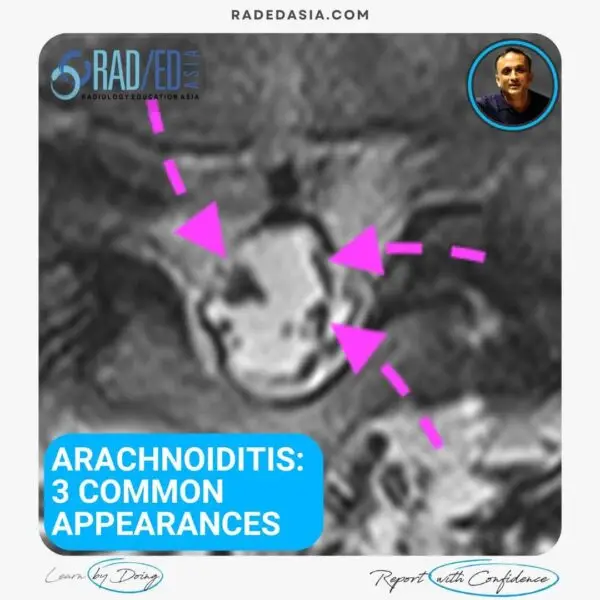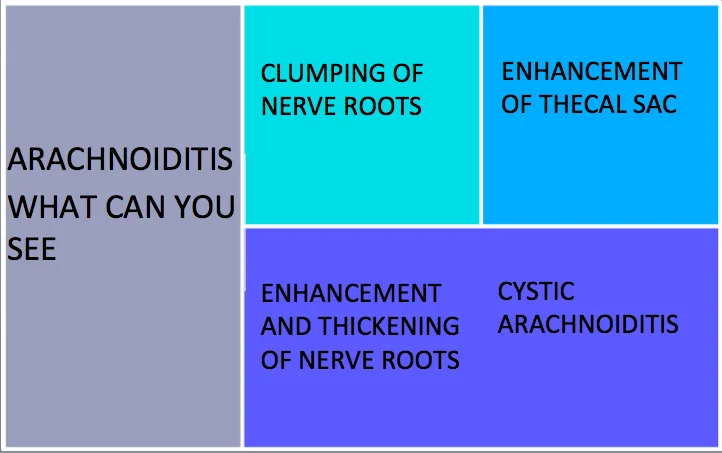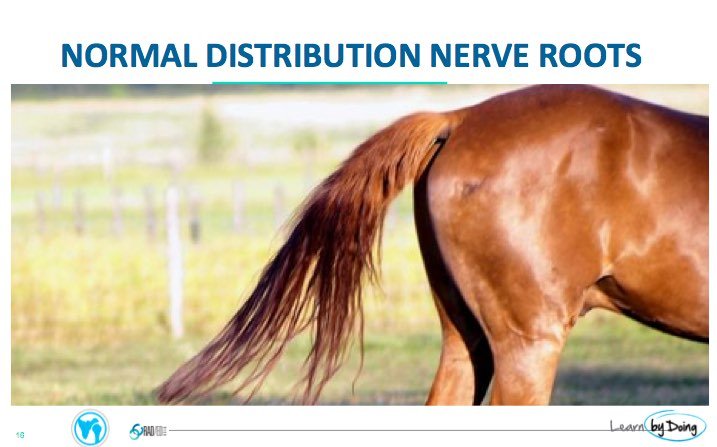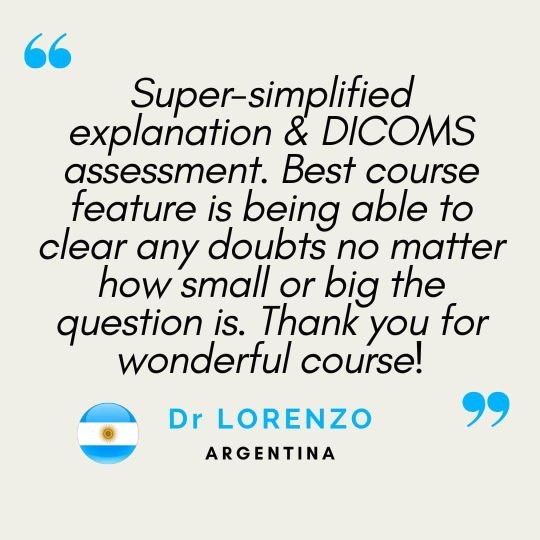

- 10th January 2026
SGD$695.00
ARACHNOIDITIS PATTERNS ON MRI

ARACHNOIDITIS PATTERNS ON MRI
- Arachnoiditis is not uncommon to see in the lumbar spine. But the most important thing about being able to recognize arachnoiditis is to first know the normal distribution of nerve roots in the spinal canal.
- The normal distribution is a bit like the horse's tail in that more proximally the nerve roots are together and as you go more distally, they separate.

Image Above: The position of the nerve roots depends on what level you are looking at. However it must be symmetrical on both sides whatever level you are looking at.

MECHANISM OF ARACHNOIDITIS:
Arachnoiditis commonly is due to Acute inflammation/infection. Hemorrhagic and chemical arachnoidits can also occur but are less common.
There is a sequence of pathological changes .
• Exudate and fibrin deposited on nerve sheaths and arachnoid.
• Collagen forms.
• Nerve roots stick together.
• Subarachnoid space becomes septated and cystic.

The thecal sac can be affected in two ways.
- Nerve roots stuck to the margins of the sac resulting in a so called empty thecal sac.
- Cystic changes in the thecal sac resulting in Cystic Arachnoiditis.
- Left image demonstrates the normal distribution of nerve roots in the lower lumbar spine.
- The central image demonstrates nerve roots peripherally distributed against the thecal sac margins.
- Right image demonstrates an empty sac where it looks like there are no nerve roots. The nerve roots are present but are flattened against the walls of the sac and are difficult to separate on imaging.

We look at all of these topics in more detail in our Guided SPINE MRI Mini Fellowships.
Click on the image below for more information.
- Join our WhatsApp RadEdAsia community for regular educational posts at this link: https://bit.ly/radedasiacommunity
- Get our weekly email with all our educational posts: https://bit.ly/whathappendthisweek
- 10th January 2026
SGD$695.00



















